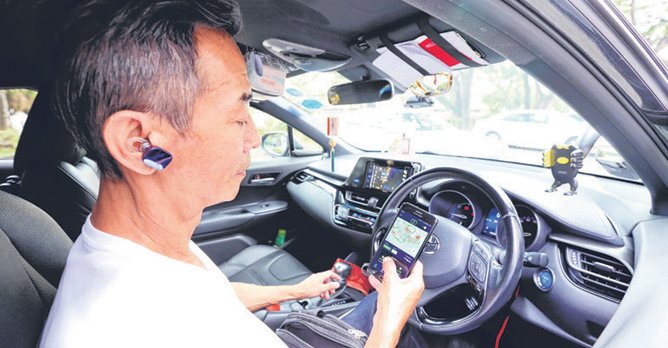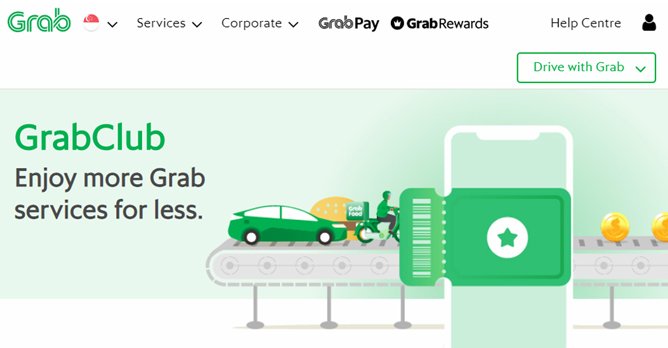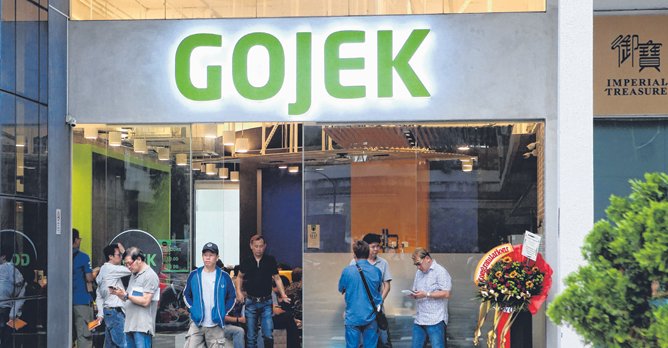Go-Jek's lower fares and driver perks prove to be big draw
14 Jan 2019|8,798 views
Customer Service Agent Joena Shivani used to commute both ways using a Grab car from her home in Tampines and her workplace in Little India.
But since Go-Jek's arrival in late November, its lower prices have drawn the 41-year old who has saved about $240 in the six weeks since she made the switch.
While the Go-Jek beta app offered only rides beginning and ending in the eastern and south-central parts of Singapore initially, it has since expanded its coverage nationwide on 2 January.
Its lower fares are the main attraction, said users.
Public Relations Consultant Gayle Lim, 23, who saves about $2 every trip she takes with Go-Jek, said, "It's not much by itself, but a few dollars here and there really adds up, especially if you are taking these cars very often because of work. I will go for whichever service is the cheapest." A check by The Straits Times on prices at different timings over three days found that Go-Jek's fares were slightly lower than Grab's when surge pricing is not in effect.
Some commuters said that while Grab's other options GrabShare and GrabHitch are cheaper alternatives, there are downsides. Undergraduate Mitchell Tan, 24, said,"I only take cabs when I urgently need to go somewhere, and the advance booking for GrabHitch does not allow that. I have also seen situations where the Go-Jek fare is cheaper than the GrabShare fare."
Despite the lower fares, private-hire drivers The Straits Times spoke to said they have seen their earnings rise by between 15 and 40% after switching to Go-Jek due to the higher incentives offered.

In contrast, Grab's incentive system is based on the number of trips completed in a week and benchmarks vary based on what milestones they had previously achieved, noted drivers who have previously driven for Grab.
Ms. Debbie Ong, 50, said the daily incentive system is less stressful for drivers. She has worked as a private-hire driver for almost three years and in an average eight-hour workday, she could pocket net earnings of around $200, about 40% more than what she would earn with Grab. She said, "I get to decide if I can rest once I hit my targets for the day. I don't have to worry about whether I can reach the trips required for the rest of the week."
Despite Go-Jek's presence, Grab remains bullish about its prospects. Mr. Lim Kell Jay, Head of Grab Singapore, told The Straits Times that its operations have been unaffected by Go-Jek's expansion. "Drivers and passengers continue to choose Grab as we continue to focus on their needs and look at ways to bring more long-term value to them," he said.
Grab had been rolling out improvements in the last few months even before Go-Jek's entry, amid rumours of the Indonesian firm's arrival. It introduced a programme in October that gives drivers a guaranteed fare level should they meet preset benchmarks in terms of trips completed and time spent online on the Grab app.

For example, a pass sold at $109 allows users to enjoy $10 off 20 rides, which translates into savings of $91 monthly.
Bok Chek Yang, 38, administrator of the PHV Riders and Drivers Singapore Facebook group, said these schemes can help Grab to retain commuters as they "provide substantial savings for regular users".
As a new player here, Go-Jek has had some hiccups. Drivers say the app loses out to Grab in terms of matching them with nearby passengers, and that waiting times in between trips are generally much longer due to a smaller pool of customers. Glitches sometimes occur on the beta app, with drivers complaining of occasions when incentive payouts are delayed, or when the points they earn are inaccurately calculated.
In addition, riders can cancel bookings but indicate that the driver asked for it. This affects the drivers' acceptance rate, and the issue has been flagged as a major problem by many drivers. Any driver who falls below a 85% acceptance rating will not be eligible for their daily bonus.
A Go-Jek spokesman said that it constantly reviews its drivers' incentive scheme to ensure it remains fair and robust. "If driver-partners have questions about the app, they should get in touch directly with Go-Jek via our in-app help function or hotline. This will help us create the best user experience for them and riders."
As Go-Jek continues to expand its base, it is unclear how long the honeymoon of financial incentives for users and drivers will last. Ms. Ong said, "They will definitely be lower in the future, as this is how businesses work."
Customer Service Agent Joena Shivani used to commute both ways using a Grab car from her home in Tampines and her workplace in Little India.
But since Go-Jek's arrival in late November, its lower prices have drawn the 41-year old who has saved about $240 in the six weeks since she made the switch.
While the Go-Jek beta app offered only rides beginning and ending in the eastern and south-central parts of Singapore initially, it has since expanded its coverage nationwide on 2 January.
Its lower fares are the main attraction, said users.
Public Relations Consultant Gayle Lim, 23, who saves about $2 every trip she takes with Go-Jek, said, "It's not much by itself, but a few dollars here and there really adds up, especially if you are taking these cars very often because of work. I will go for whichever service is the cheapest." A check by The Straits Times on prices at different timings over three days found that Go-Jek's fares were slightly lower than Grab's when surge pricing is not in effect.
Some commuters said that while Grab's other options GrabShare and GrabHitch are cheaper alternatives, there are downsides. Undergraduate Mitchell Tan, 24, said,"I only take cabs when I urgently need to go somewhere, and the advance booking for GrabHitch does not allow that. I have also seen situations where the Go-Jek fare is cheaper than the GrabShare fare."
Despite the lower fares, private-hire drivers The Straits Times spoke to said they have seen their earnings rise by between 15 and 40% after switching to Go-Jek due to the higher incentives offered. 
In contrast, Grab's incentive system is based on the number of trips completed in a week and benchmarks vary based on what milestones they had previously achieved, noted drivers who have previously driven for Grab.
Ms. Debbie Ong, 50, said the daily incentive system is less stressful for drivers. She has worked as a private-hire driver for almost three years and in an average eight-hour workday, she could pocket net earnings of around $200, about 40% more than what she would earn with Grab. She said, "I get to decide if I can rest once I hit my targets for the day. I don't have to worry about whether I can reach the trips required for the rest of the week."
Despite Go-Jek's presence, Grab remains bullish about its prospects. Mr. Lim Kell Jay, Head of Grab Singapore, told The Straits Times that its operations have been unaffected by Go-Jek's expansion. "Drivers and passengers continue to choose Grab as we continue to focus on their needs and look at ways to bring more long-term value to them," he said.
Grab had been rolling out improvements in the last few months even before Go-Jek's entry, amid rumours of the Indonesian firm's arrival. It introduced a programme in October that gives drivers a guaranteed fare level should they meet preset benchmarks in terms of trips completed and time spent online on the Grab app.

For example, a pass sold at $109 allows users to enjoy $10 off 20 rides, which translates into savings of $91 monthly.
Bok Chek Yang, 38, administrator of the PHV Riders and Drivers Singapore Facebook group, said these schemes can help Grab to retain commuters as they "provide substantial savings for regular users".
As a new player here, Go-Jek has had some hiccups. Drivers say the app loses out to Grab in terms of matching them with nearby passengers, and that waiting times in between trips are generally much longer due to a smaller pool of customers. Glitches sometimes occur on the beta app, with drivers complaining of occasions when incentive payouts are delayed, or when the points they earn are inaccurately calculated.
In addition, riders can cancel bookings but indicate that the driver asked for it. This affects the drivers' acceptance rate, and the issue has been flagged as a major problem by many drivers. Any driver who falls below a 85% acceptance rating will not be eligible for their daily bonus.
A Go-Jek spokesman said that it constantly reviews its drivers' incentive scheme to ensure it remains fair and robust. "If driver-partners have questions about the app, they should get in touch directly with Go-Jek via our in-app help function or hotline. This will help us create the best user experience for them and riders."
As Go-Jek continues to expand its base, it is unclear how long the honeymoon of financial incentives for users and drivers will last. Ms. Ong said, "They will definitely be lower in the future, as this is how businesses work."
Latest COE Prices
August 2025 | 1st BIDDING
NEXT TENDER: 20 Aug 2025
CAT A$102,009
CAT B$123,498
CAT C$70,001
CAT E$122,334
View Full Results Thank You For Your Subscription.





















